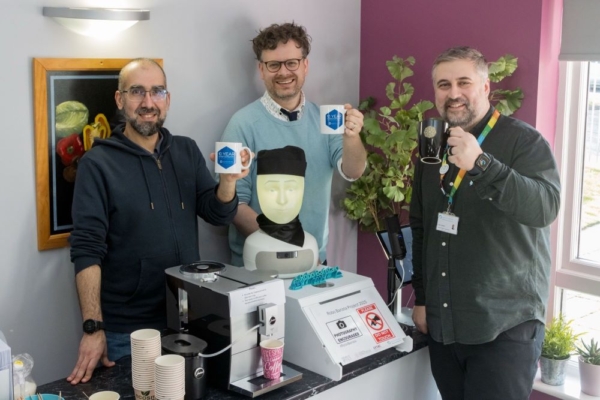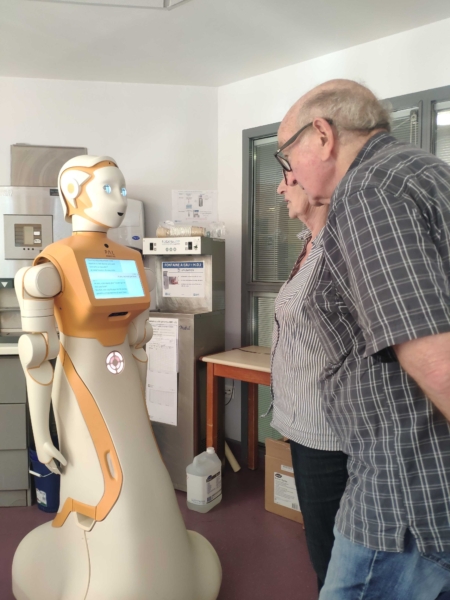Social robot brings residents together at housing complex
A housing provider in North East England has enlisted a conversational robot from The National Robotarium to explore how humans interact with robotics in a social setting.
The AI-empowered humanoid Furhat robot has been installed in North Star Housing’s Aspen Gardens communal bistro area, where it will have conversations with residents and visitors while taking orders and preparing hot drinks through an automated coffee machine.
Along with friends and family, residents – many of whom require additional care at the complex – will provide feedback to The National Robotarium’s researchers so lessons can be learned about how humans prefer to interact with robots and whether they can be adopted to tackle loneliness.
To enable the robot to engage in meaningful conversations with residents, it has been programmed with information about the local area, its history and local celebrities. It can also provide updates on activities taking place at Aspen Gardens, encouraging residents to participate and socialise with each other.
Fred Connor, 87 (pictured below), was one of the Furhat’s first customers. “It’s the first time I’ve seen anything like it, but we have to embrace change, so it’ll be interesting to see how he gets on.”

The idea for the partnership between North Star and The National Robotarium resulted from a creative workshop involving North Star staff facilitated by Durham-based IT consultancy Waterstons.
Alex Waterston, Associate Director of Innovation said: “From our point of view, this is really exciting because it’s a new challenge for us at Waterstons – using technology to free up time to provide better customer service. If that can be achieved, it’s going to be really worthwhile.”
Leading the project is Heriot-Watt PhD student Bruce Wilson, David Robb and Dr Theodoros Georgiou (pictured below, far left), Assistant Professor of Computer Science at Heriot-Watt University and The National Robotarium.
He said: “This collaboration with North Star is a vital part of our wider research initiative to understand how humans and robots interact in real-world settings.
“The data we gather will inform the future development of robotics across multiple sectors, particularly in social care where such technology could transform service delivery.

[l-r] Dr Theo Georgiou, Alex Waterston, Associate Director of Innovation at Waterstons and Sean Lawless, Director of Insight and Transformation at North Star Housing
“By placing conversational robots in communities like Aspen Gardens, we’re not just conducting research – we’re advancing our understanding of how AI and robotics can genuinely improve quality of life for elderly residents while addressing pressing challenges in the care sector.
“This project represents a critical step in the National Robotarium’s mission to create people-centred, intelligence-driven robotic solutions that can be widely deployed to support an ageing population.”

Bruce Wilson is leading the project as part of his PhD in Robotics
The launch of the project was featured on BBC Radio Tees, BBC Look North (North East and Cumbria) and The Northern Echo.

 Chris Barron
Chris Barron




 Ben Glasgow
Ben Glasgow Adobe stock
Adobe stock










